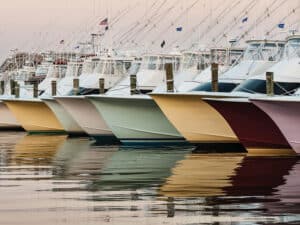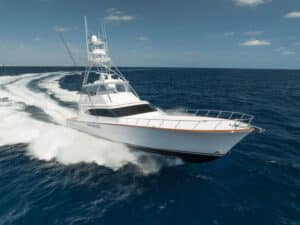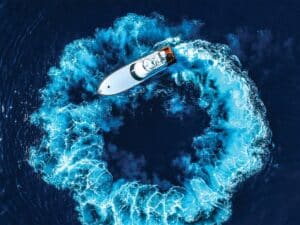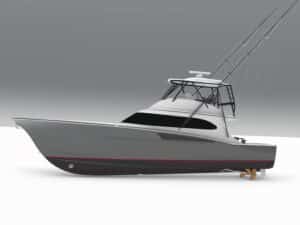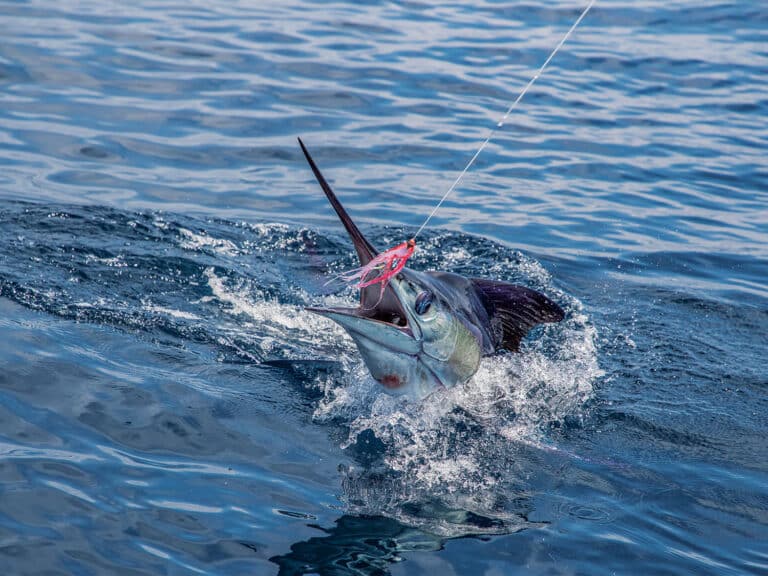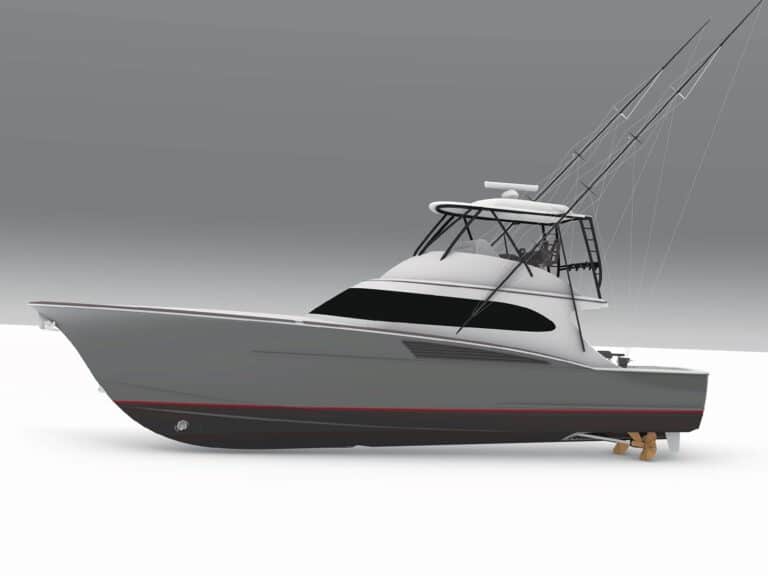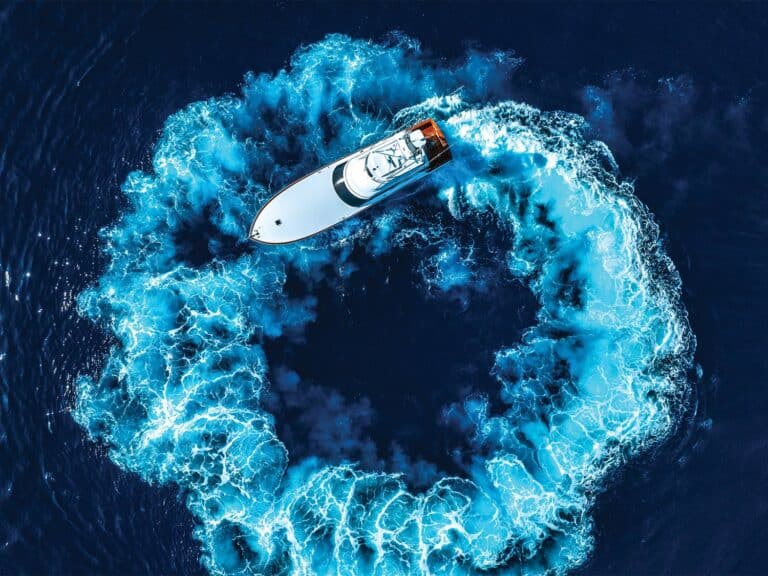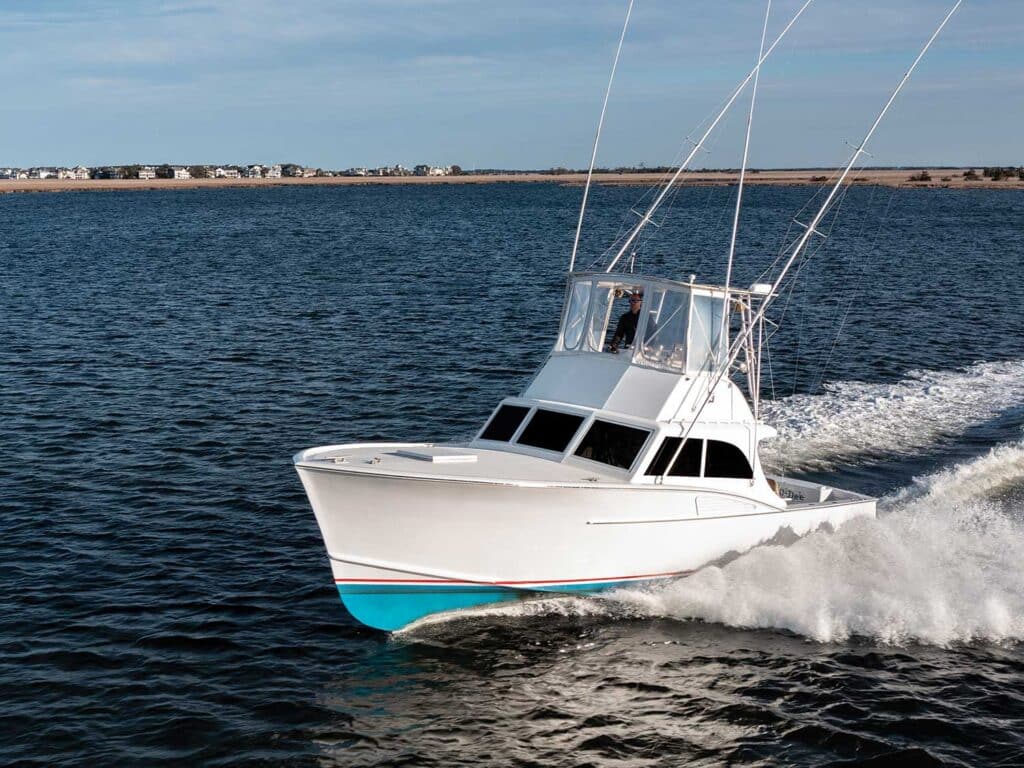
Special delivery: Sign up for the free Marlin email newsletter. Subscribe to Marlin magazine and get a year of highly collectible, keepsake editions – plus access to the digital edition and archives.
The thick, velvety summer-night sky blanketed the shores of the Outer Banks as the hum of a single diesel engine sounded across Oregon Inlet. The vessel’s navigation lights broke the darkness as it headed toward the Gulf Stream, like a welcomed ghost from the past. It was just after 3 a.m., and the 2022 Alice Kelly Memorial Ladies Only Billfish Tournament in Manteo, North Carolina, was officially underway. Although most of the other competitors remained asleep, the glow of green and red from Mel-O-Dee was already fading into the horizon.
The boat, a relic from the earliest days of North Carolina’s boatbuilding trade, was en route to a destination she’d visited countless times before. Capt. Buddy Callaway felt a complex churn of mixed emotions as he and his crew set out for the Gulf Stream that morning. Nerves are typical for any tournament competitor, but amid those expected inklings of excitement and anxiety, Callaway was also warmly thinking of his late grandfather, Buddy “BC” Cannady.
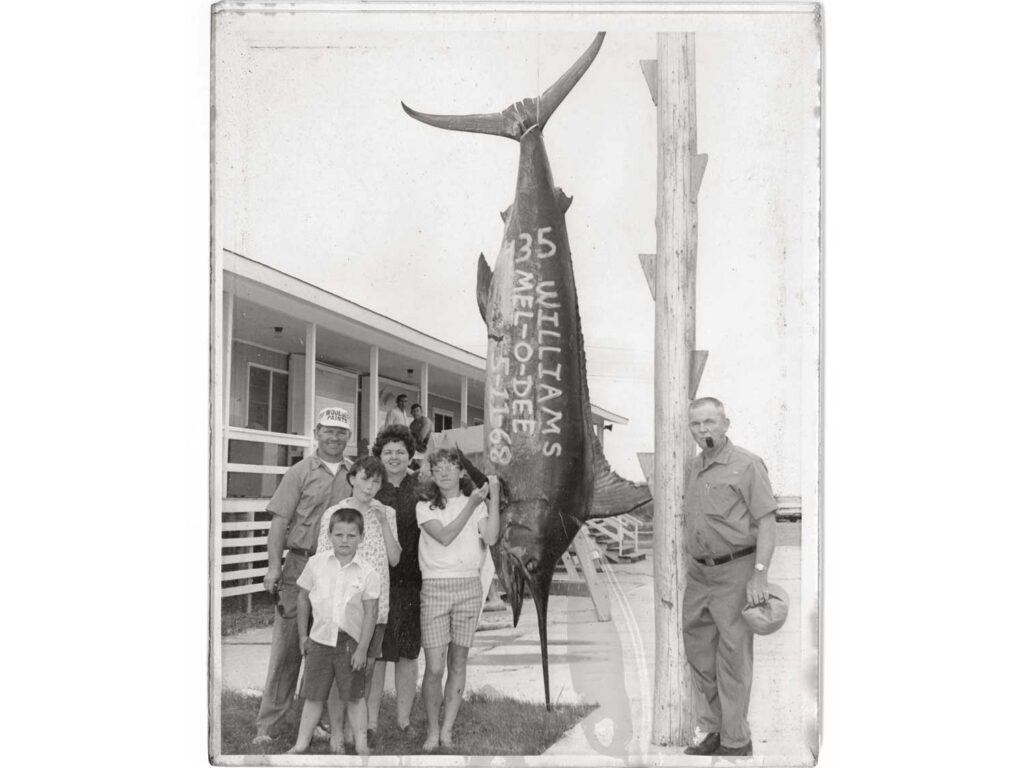
Collective History Revealed
The winter months could be unspeakably cold on the Outer Banks in the 1960s. During the chill of the offseason, many fishermen took to building boats in open shops. Cracked and leathered hands are proof of hardy men. North Carolina’s fishing fleet had plenty of them, and Cannady was certainly one of those characters. In his lifetime, the renowned charter captain built more than 100 boats—a mix of custom sport-fishers and skiffs of various lengths and uses—which still proudly carry his name.
In those early days, it was commonplace for builders to work together on projects, spurring collaborative ingenuity and growth. Multiple builders set up shop around Manteo and Wanchese, and information was shared freely among them. “Everyone who built boats ran a charter boat, and because we were all good friends, we would help out one another, learning in the process,” says Sunny Briggs, another major player in the early days of North Carolina’s boatbuilding industry. “We would just stop by unannounced, offering up constructive criticism and asking questions like, ‘Gosh, why didn’t you make the cabin with a little more crown in it?’”
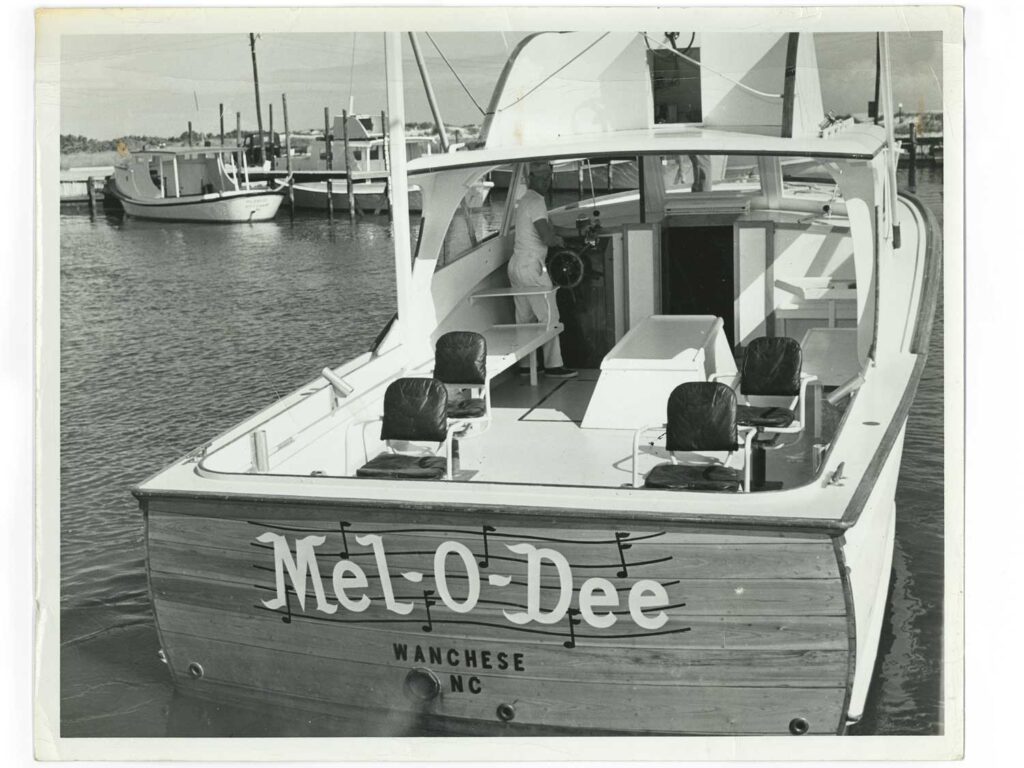
The carpenters moved from shop to shop, not out of vehement competition, but to simply assist their neighbors. “That camaraderie steered much of the change we saw in boatbuilding at the time,” Briggs continues, and Cannady was often the center of it all. He was not only recognized as a leader in the community, but also as an impossibly hard worker. Briggs, who worked for Cannady as a mate and carpenter for 15 years, continues: “He was smart, a fast talker, and always thinking about how to do things better. At the end of the day, your tongue was hanging out because he worked you so hard.”
Even the young Buddy Callaway struggled to keep up with his grandfather. “He was very athletic and exceptionally strong,” he says. “At 75, he could work me under the table—it was kind of embarrassing,” he says with a laugh. “I’d be exhausted, and he would just say, ‘We had a long day there!’” Cannady had this endearing way of adding “there” to the end of a sentence; it quickly became one of his trademarks, and much of the community knew him as “BC there.”
Harmony and Rhythm
Before career boatbuilding established a solid foothold in the area, Cannady had assisted pioneer boatbuilder Warren O’Neal on several projects. When he approached his friend about a charter boat he wanted to build, O’Neal was glad to help execute his vision. Cannady, O’Neal and Omie “Sportsman” Tillett worked together on the project, eventually unveiling the 38-foot Mel-O-Dee in 1962. The boat, officially branded a Warren O’Neal, was framed and planked with juniper wood, and was one of the first to have the features now considered integral to classic Carolina styling: a sharp entry, broken sheerline and generous bow flare.
One of the most notable features of Mel-O-Dee that created quite the stir when it was first revealed was the boat’s unusual transom design. Cannady and O’Neal had hired Elizabeth City’s talented sign painter RO Givens to officially anoint the boat with her name. Mel-O-Dee was a sweet tribute to Cannady’s 6-year-old daughter, Melodye, so the design would need to be special. “My grandmother sketched what she wanted: a flurry of musical notes and bars accompanying the name in honor of my mom,” Callaway explains. “And RO Givens famously brought her wish to life; it was the first artistic Carolina transom, and it really set the boat apart from the rest of the fleet.”
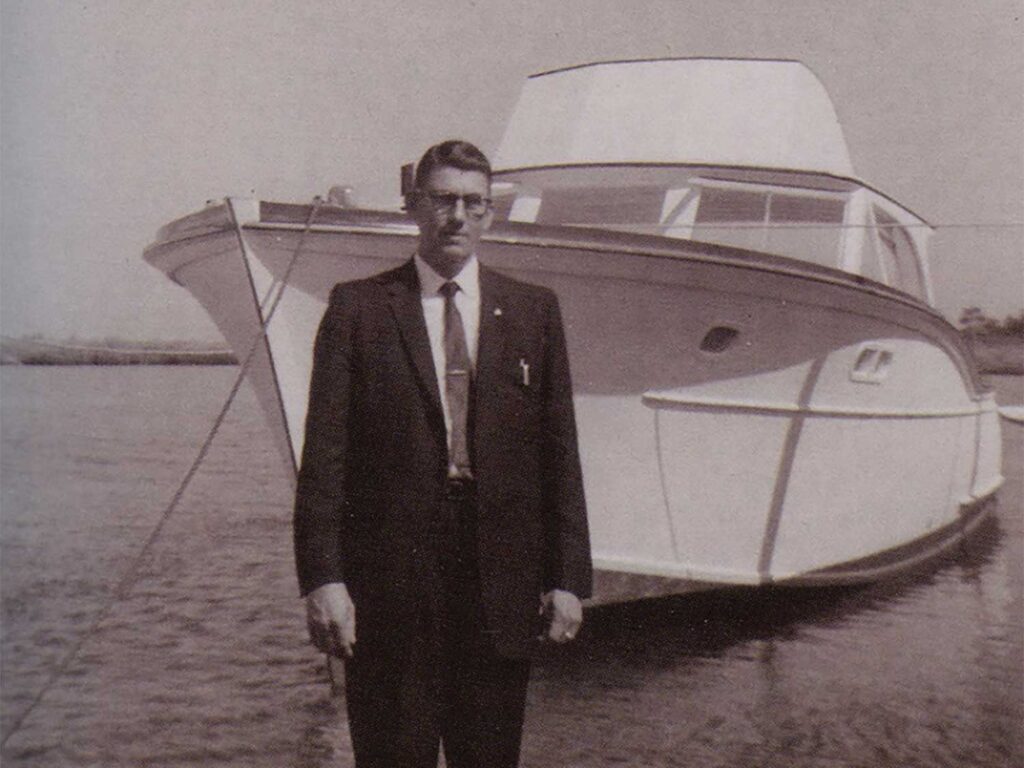
But it wasn’t just the transom that made Mel-O-Dee special. “That boat was ahead of its time,” Briggs says. “She did everything a charter boat should do, and was faster than anything else like it on the water.” With the ability to run up to 13 knots, Cannady’s charter boat was indeed the fastest in Oregon Inlet. “Mel-O-Dee wasn’t just faster, she was also more efficient,” Callaway says. “With less prop wash and less noise coming from the propeller, her design was a true turning point in the evolution of Carolina sport-fishing vessels.”
While Callaway wasn’t there to experience this evolution, he grew up hearing these original boatbuilding stories from the masters themselves. His grandfather, Briggs, Tillett, Buddy Davis, Ricky Scarborough Sr., and others recounted the details at lunches, fishing trips, and family gatherings. The young captain has kept a mental logbook of that local history and the narratives that are woven into the very fabric of the man he is today. In those retellings, there was one thing that always stood out to him: His grandfather’s connection to Mel-O-Dee went well beyond just boatbuilding.
Cannady, his wife, Maggie, and their daughter spent considerable time together aboard the 38-foot O’Neal. The boat and Melodye Cannady Callaway were considered “sisters of the sea.” Melodye and her mother would often wait at the dock for Cannady to return from fishing trips to see the day’s catch and help out. “I can’t even begin to put into words just how much that boat meant to me and my parents,” she says. “As a family, we’ve always loved our boats—they mean the world to us.” For 11 years, Mel-O-Dee provided a special and necessary way for the Cannadys to enjoy time together, until tragedy abruptly struck the close-knit family in 1973.
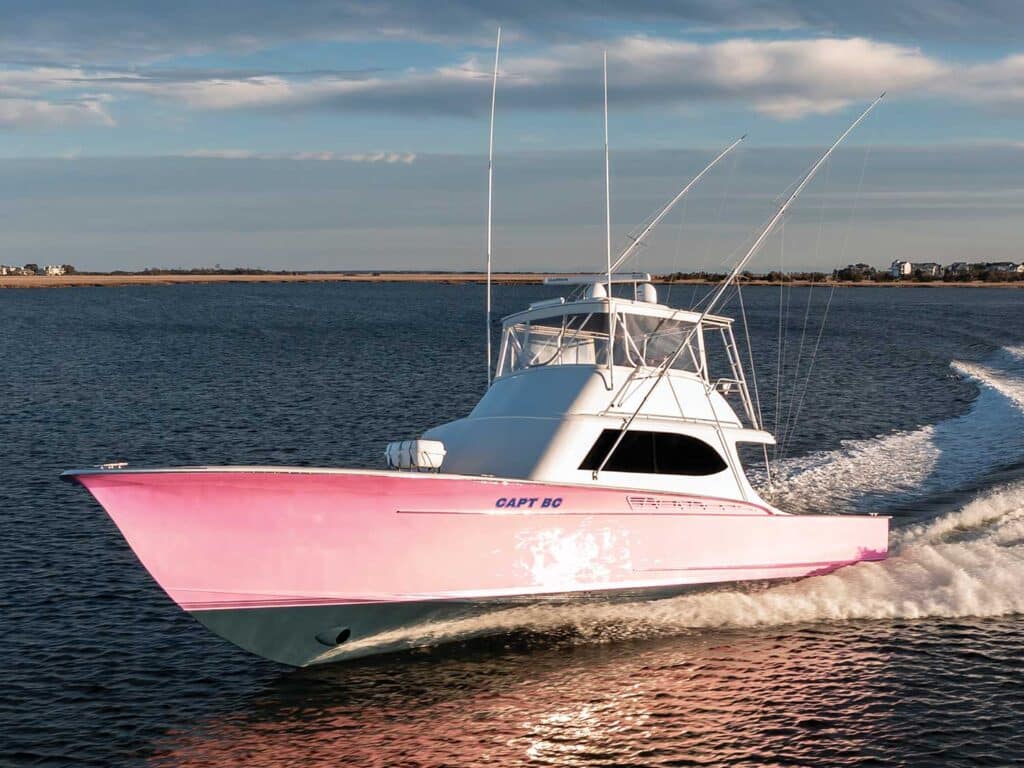
Rebirth
In a terrible accident, Maggie Cannady passed away in a house fire. Melodye was just 16 years old at the time. “My mother was a beloved schoolteacher and was always very encouraging toward my dad,” Melodye recalls with a tinge of heartache. “They say that every successful man has a strong woman behind him, and she helped make his dreams come true.” After Maggie’s death, Cannady made the difficult decision to sell Mel-O-Dee, putting the earnings into a new project: the first Capt. BC custom sport-fisherman.
It didn’t take long for word to spread about how quickly Cannady could build a boat, without sacrificing quality. It was typical for him to build a boat, fish it for a few years, and then move on to another one. He found that it was an excellent way to test which designs worked well and which warranted modification. Cannady had established a name for himself as a master craftsman. His boats were built with immense care and gentleness, even at his unprecedented speed.
“I ate breakfast with Omie a lot, especially in the last years of his life,” Callaway says. “We would always talk about boats, and the Lord. He would often hit on the fact that my grandfather put his soul in his boats, and that he respected the bend and flow of them. He never forced the wood, but instead, would let it do what it wanted to, which ultimately makes a boat prettier.” Those talents are still unmistakable today if you look closely at a Buddy Cannady boat.
Although Cannady went on to build more than 30 custom sport-fishing boats in the next several decades of his life, none held his attention like Mel-O-Dee did. After he sold her, the boat went to Virginia and eventually wound up in dry dock, where its condition deteriorated. Fortunately, Neph Matthews purchased the boat, fixed it up, renamed it Lucky Chip, and docked it in Hatteras, just over an hour away from Cannady’s home. “My grandfather would go to Hatteras, just to get on the boat and talk about how it had changed his life, and sport fishing,” Callaway recalls.
Callaway’s sister, Lillie Callaway Leavel, lived in Hatteras at the time and would often run into her grandfather when he visited the boat. “We’d stop by Mel-O-Dee and talk,” she says. “I always thought those moments connected me to him in our own special way.”
Even at a distance, Mel-O-Dee continued to bring the family closer together. “Some boats come and go,” Callaway says, “but Mel-O-Dee stuck with him.”
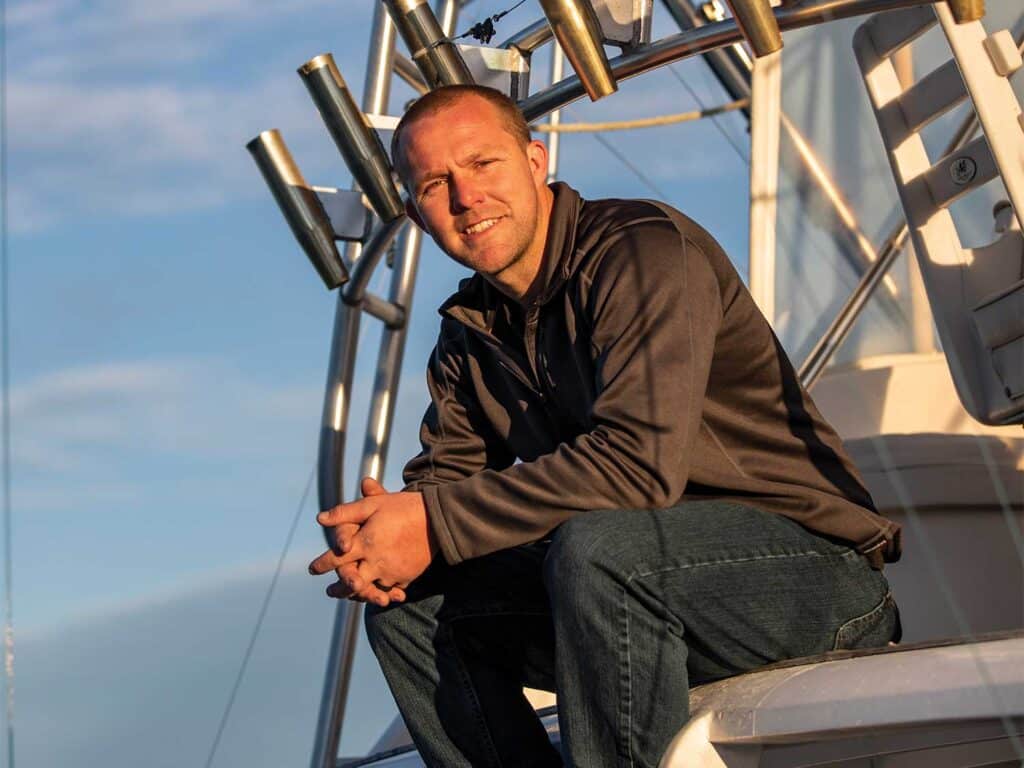
Homecoming
In 2018, Cannady passed away at the age of 86. He never saw the return of his beloved Mel-O-Dee, but his family was determined to find a way to bring her home. There were so many precious memories tied to that boat, memories brimming with loved ones lost, that it only seemed fitting to get her back to Manteo. “After my grandfather passed, my mom and I stopped by just to see if it would even be possible for us to purchase the boat,” Callaway remembers. “Matthews could have sold her for triple what we could pay but decided to sell us the boat at a fair price. We will never forget that.”
“The homecoming was so emotional,” Melodye recalls. “When we pulled away from the dock, I welled up with tears of pure joy. Neph was crying too as he waved us goodbye. We came up through the sound, and everything felt just like it had when I was a little kid—the sun shining through the salt spray, the smell of diesel and smoke. My dad always said, ‘That boat sure has the right hum,’ and it felt so good to hear that hum again. I turned to my son and was struck by how much he looked like his grandfather; Buddy’s stature made him the spitting image of my dad. I know Dad had to be there with us, like an angel by Buddy’s side.”
Once the boat returned to Manteo, the family realized the immensity of the project ahead. They wanted to pay tribute to the boat’s original look while also making some necessary updates so that they could fish a modern boat. Such endeavors can be extremely difficult, especially when working with wood that is over a half-century old. “I did a lot of the work myself,” Callaway says. “I went to Craig Blackwell’s shop for help with some of the structural stuff because they know how to work with juniper wood. I had to dry out the boat with fans in a controlled environment to even get modern epoxies to bond with the 60-year-old wood.”
The fun part of the project was getting the boat back to its original appearance—a true tribute to the builders and artists who first brought her to life. “Of course, we put the original name back on,” Callaway says. “The boat had been fiberglassed, so we couldn’t varnish the transom; instead, we went with faux juniper and used old photographs to re-create the original transom design. We also replaced the windows, going back to their original size, and stripped the hullsides and repainted them to match the original Mel-O-Dee’s colors—white with blue bottom paint and a red boot stripe.”
Callaway embraced some of the modifications previous owners had made, and although they weren’t part of the original design, they did come with some perks. The boat originally didn’t have a hardtop but now does, and the steering station is no longer below but on the flybridge. Callaway also added tabs to keep the boat trimmed properly, especially because the updated engine had made it capable of running at double the speed it was initially built to travel. Lastly, new lights, a stereo, and some modern electronics were welcome updates to the old girl.
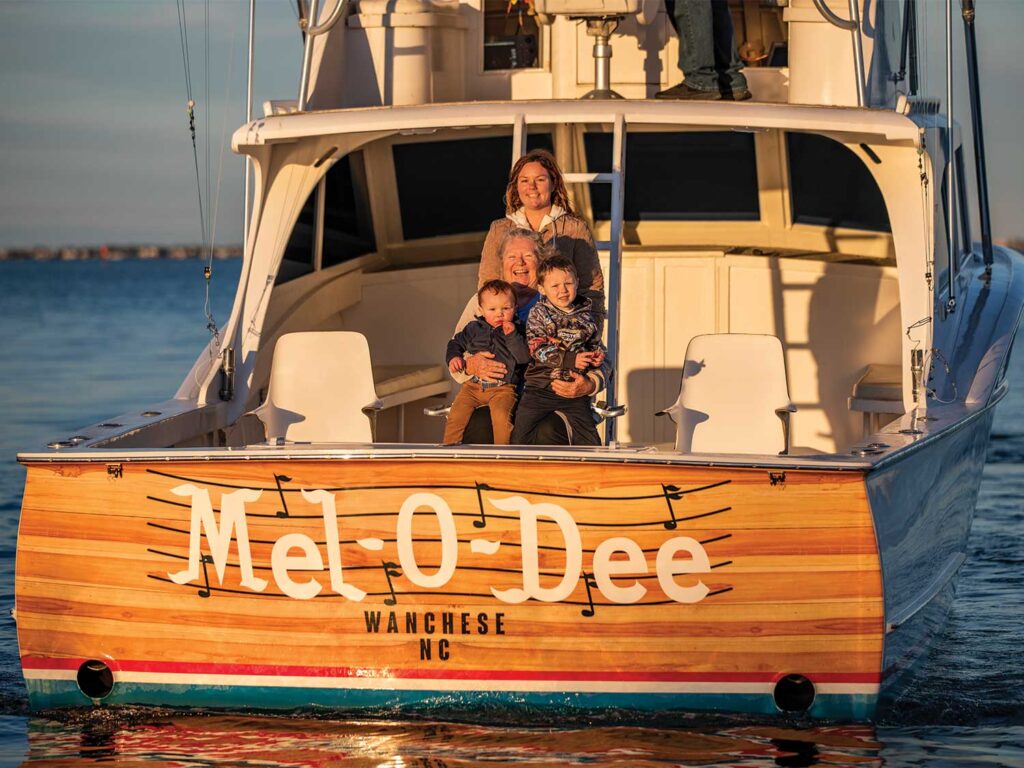
Once the boat was restored to Callaway’s standards—standards undoubtedly learned from his grandfather and the other great builders who had helped raise him—the young captain and his family turned Mel-O-Dee loose from the dock to fish the boat for the first time. In a moment laced with magic, a blue marlin appeared in the wake. Mate Derek Nelson hooked the fish and handed the rod to Melodye. As her son stood at the helm of her father’s favorite boat—a boat that he envisioned and helped build from scratch alongside dear friends, a boat that had shared some of her last precious moments with her mother—Melodye caught and released the blue marlin.
Callaway carefully considered this history, work and triumph when heading out to sea that morning of the Alice Kelly. Legacy can be a heavy burden, but Callaway bears his proudly and gracefully. “His granddaddy would be very proud of the man Buddy has become,” Briggs says with a tender smile. The young captain put on a great performance, finishing in fifth place among a fleet of 155 boats. Callaway had never hooked a blue marlin as a captain, but when one swam into the spread, he hooked the fish and handed the rod to his sister, Lillie. Nelson later hooked another one, and handed the rod to Callaway’s wife, Nikki Seward, who successfully reeled in her own first blue marlin, a fish that she had been hunting for almost 10 years.
Read Next: We take you inside the build with a look at what it takes to produce one of these classics.
“It was really great to take an old boat to compete in a modern tournament and have that experience,” Callaway says. “We want to enjoy the boat for what it is instead of trying to make it what it isn’t.” Mel-O-Dee has always been a hub for creating memories, which perhaps is her destiny—where the past, present and future coexist.
“Now I see why Mel-O-Dee changed my grandfather’s life,” Callaway beams. “My mom experienced this same joy 60 years ago, and she’s living it all over again.” Mel-O-Dee, along with the last Capt. BC boat the family purchased recently, stay at Melodye’s house, all lit up. Pieces of ancestral gold in her backyard, reminders that bring back sentimental memories of both her mother and her father. Mel-O-Dee’s magic carries on there.
